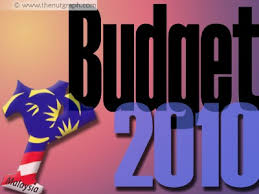
Procedure for Conversion of partnership firm into
company and provision of Companies Act,
1956 and the Income Tax Act, 1961
Mar 12, 2010 Company Law
REORGANISATION OF A FIRM INTO A COMPANY:
Corporatisation is the need of the hour. The entire world is
gradually drifting towards one global market without any
trade barriers between the countries. A small organisation
led by few partners cannot think of growth on large scale
without corporatising itself. Corporatisation have their own
advantages such as Limited Liability, Perpetual Succession,
Transferability of shares, Expansion etc.
Conversion of a partnership firm to a company shall be
studied under the provisions of the Companies Act, 1956 and the Income Tax Act, 1961.
COMPANIES ACT, 1956:
There would be 2 options available to a partnership firm for
continuing the business in the form of a company:
* To dissolve the firm and incorporate a new company
under the Companies Act, 1956; or
* Incorporate a company which can legally take over
the business of the firm and continue the same business under
Part IX of the Companies Act, 1956
The firm may be converted into a company by following the
provisions of Part IX of the Companies Act, 1956 since
there are many benefits which both the company and the firm stand to enjoy.
Sections 565 to 581 prescribes the law and procedure for
Companies authorised to register under Part IX of the Companies Act, 1956.
Section 565 of the Companies Act, 1956 provides
that any company formed in pursuance of any Act of
Parliament or any other Indian Law other than the Companies
Act, 1956; consisting of seven or more members may at any
time register itself under this Act, either as an unlimited company
or as a company limited by shares or limited by guarantee.
Circular No. 5/99 dated 19-5 -99 and Press Release dated
5/8/99, clarified that, the Registrar of Companies will
continue to register Partnership Firms under Part IX of the
Companies Act as Joint Stock Companies on satisfying the
procedure and conditions. Accordingly, an existing Partnership
Firm can be registered under the Companies Act.
Joint Stock Companies has been specifically defined for the purposes
of Part IX under section 566 of the Companies Act, 1956.
STEPS FOR INCORPORATION OF COMPANY UNDER PART IX:
Step 1: Hold a meeting of the partners to transact the following:
- Assent of majority of its members as are present in person or
where proxies are allowed, by proxy, at a general meeting summoned
for the purpose of registeringthe firm under Part IX of the Companies Act,
1956. The majority required to assent as aforesaid shall consist of not less
than 3/4 of the members as are present in person or where proxies are
allowed, by proxy.
- To authorize one or more partners to take all steps necessary
and to execute all papers, deeds, documents etc. pursuant to
egistration ofthe firm as a Company.
- To execute a supplementary Partnership Deed to align it
with the requirements as under:
* There must be atleast 7 partners in the partnership firm;
* The firm may be registered with the Registrar of Firms;
* There must be a fixed capital divided into units;
* There must be provision of converting a firm into company;
* There must be an agreement by the partners to convert
the partnership to a company. This can be done by a contrac
t in writing to this effect to which the partner’s resolution for
conversion can be attached as annexure.
- Execute a settlement deed.
Step 2 : Application for Director’s Identification Number
And Digital Signaturers Certificate
Step 3 : Name approval:
Under the Part IX route, one of the major advantages is that the
business can be run under the same name as that of the firm
except that in addition to the name of the firm the words
‘limited’ or ‘private limited’ has to be added. However
, if there is a company already in existence, the name
would not be available. In that case, the following steps need to be taken.
Ø An application in Form No. 1A needs to be filed with the Registrar of
Companies (ROC) with the following details stating the fact that
the partnership firm proposed to be converted under part IX of the Companies Act.
* Certified true copy of Partnership Deed.
* Certified true copy of the latest balance sheet of the partnership firm.
* Certified true copy of the latest income tax assessment order/return.
o Consent of all the partners stating that they have agreed to register
the partnership firm as a Company .
o Certified True Copy of the resolution passed by the firm in this regard .
Ø The application is required to be digitally signed by one of the promoters.
Ø The details to be stated in the said application are as follows :
1. Maximum Six alternative names for the proposed company. (in order of preference)
2. Names , Father’s/ Husband’s Name, Permanent
Residential Addresses, Present Residential Address,
Occupation, Name of the Companies in which the
Promoter is Director/Promoter , Date of Birth , DIN of the Promoters.
3. Authorised Capital of the proposed Company.
4. Main objects of the proposed company.
5. State of Registered Office of Company
Note:
1. As per the Companies Act, 1956, a Private Company should
have a minimum Paid up Capital of Rupees One Lac.
2. As per the Companies Act, 1956 there should be at least two
promoters in a Private Limited Company.
3. The Registrar of Companies will ordinarily inform within a period
of seven days from the date of submission of the application whether any of the names applied for
is available.
4. If the name is not made available, the Registrar of Companies
may reject the application and if it happens, new names to be provided for approval.
Step 4 : Registration of Company:
• On obtaining the approval of name , file the following documents
with the registrar of Companies within 60 days from the date
of name approval:
a. Two sets of Memorandum and Articles of Association
of the Company. One set shall be duly stamped. These will be
similar in all respects to a normal Memorandum and Articles of
Association except that it incorporates therein terms of the settlement deed
b. The Memorandum and Articles of Association is to be
stamped as per the Indian Stamp Act.
c. Thereafter these documents are required to be executed
by the promoters in their own hand after the date of Stamping
of Memorandum & Article of Association in duplicate stating
their full name, father’s name, residential address, occupation,
number of shares subscribed for & Signature etc.
d. However, if any director is foreigner and not present in India,
his signature should be attested in Indian Embassy located
in his home country.
e. Form No. 1 - This is a declaration to be executed on a
non-judicial stamp paper by one of the directors of the
proposed company or other specified persons such as
Chartered Accountants, Company Secretaries, Advocates,
etc. stating that all the requirements of the incorporation have
been complied with.
f. Form No. 18 - This is a form to be filed by one of the directors
of the company informing the ROC the registered office of the proposed company.
g. Form No. 32 - This is a form stating the fact of appointment of
the proposed directors on the board of directors from the date
of incorporation of the proposed company and is signed by one
of the proposed directors.
h. Power of Attorney signed by all the subscribers to MOA
authorizing 2` 1one of the subscribers or any other person to
act on their behalf for the purpose of incorporation and
accepting the certificate of incorporation.
i. Form No. 37 – This form is an application by an existing
Joint Stock Company for registration as a limited / an unlimited company.
j. Declaration by two partners verifying the particulars
set forth in the above mentioned documents.
k. Consent letters from Directors
l. Filing fees as may be applicable.
m. Other information to be submitted:
i) A list showing the names, addresses and occupations of
all persons who on a day named in the list, not being more
than 6 clear days before the date of registration were members
of the company, with the addition of the shares or stock held by
them respectively, distinguishing, in cases where the shares are
numbered, each share by its number.
ii) If the company is intended to be registered as a
limited company, a statement specifying the following particulars :-
a) the nominal share capital of the company and the
number of shares into which it is divided or the amount
of stock of which it consists
b) the number of shares taken and the amount paid
of each share c) the name of the company, with the addition
of the word “Limited” or “Private Limited” as the case may
be, as the last word / words, in case the company is being
registered with limited liability.
Step 5 : On completion of the formalities, the registrar
shall register the Company under Part IX of the Act and issue
a certificate of incorporation.
Steps for Incorporation of a public limited company:
First Five stages are almost same for incorporation of
a public limited company except there should be at least
seven subscribers, three directors and the minimum paid up capital of Rs. 5 lacs.
After completion of first three stages a private limited
company may commence its business but a public limited
company is required to obtain certificate for commencement
of business from Registrar of Companies.
For obtaining the Certificate for commencement of its business,
the Company is required to
submit following documents with Registrar of Companies:
* Form 20 to be executed on a non-judicial stamp paper
* Statement in lieu of Prospectus
* Affidavit from each directors stating that the Company
has not commenced its Business
* Details of Preliminary expenses
* Board Resolution for approval of preliminary expenses.
* Board resolution for appointment of first Auditors
* Consent letter from the Auditors for acting as Statutory Auditors.
Registrar of Companies thereafter shall process the documents
and if all the documents are in order then he will issue a Certificate
for commencement of Business.
Steps after incorporation of private company:
* Once the new company is formed, the takeover agreement
would be entered between the Partnership Firm and the newly
incorporated company.
* Convene a Board Meeting after giving notice to all the
directors of the newly incorporated company immediately after
incorporation as per section 286 of the Companies Act, 1956 to
adopt the agreement entered into by the company and the partner
of the firm for the acquisition of business of the firm.
* In such a situation, the entire business of the firm along with
all its assets and liabilities is transferred to the company.
* The company may issue shares or other securities to the
Partner of the firm.
Steps after incorporation of public company:
* Once the new company is formed, the takeover
agreement would be entered between the Partnership
firm and the newly incorporated company
* Convene a Board Meeting after giving notice to all
the directors of the newly incorporated company immediately
after incorporation as per section 286 of the Companies Act,
1956 to adopt the agreement entered into by the company.
* In the above Board Meeting also fix up the date, time , place
and agenda for calling a General Meeting to pass a Special
Resolution under section 81(1A) of the Companies Act,
1956 giving powers to the Board of Directors to issue
and allot equity shares to Partners of the firm.
Effect of Registration under part IX:
* Vesting of Property : All property, movable as well as
immovable, including actionable claims belonging to or vested
in the firm at the time of registration shall, on such registration
pass to and vest in the company as incorporated under Part IX. [Section 575].
* The registration of a company under Part IX shall not
in any manner affect its rights or liabilities in respect of any
debt or obligation incurred or any contract entered into, by, to,
with or on behalf of the firm before registration. [Section 576].
* All suits and other legal proceedings taken by or against
the company or any public officer or member thereof which
where pending at the time of registration may be continued in
the same manner as if registration had not taken place.
However, no execution can be done against the property
or person of any individual member of the company on any
decree or order obtained in such suit or proceeding. If the property
of the company is inadequate to satisfy the decree or order, an
order for winding up the company may be obtained. [Section 577].
* All provisions of any Indian law or other instrument
constituting or regulating the company shall apply to the
registered company in the same manner as if the company had
been formed under the Companies Act, 1956 and those conditions
were required to be contained and were contained in its
Memorandum and Articles of Association. [Section 578].
* As per section 383A of the Companies Act, if the paid up
capital of the Company is Rs. 200 lacs or more than the company
is required to appoint a full time Company Secretary.
* As per section 269 of the Companies Act, 1956 if the paid up
capital of the company is Rs. 500 lacs or more than the
Company is required to appoint either Managing
Director or Whole Time Director or Manager.
* Debts and liabilities are not automatically transferred to the
new company and therefore a novation agreement will have to be
entered into by the company with its debtors and creditors.
* It is advisable for the firm to obtain an indemnity from the
company to the partnership firm for all acts, deeds and things
done after the registration under Part IX and also vice versa.
This is required as the liability of the firm is unlimited and extends to
the personal assets of the partners.
* It is also to be noted that the rights, liabilities, debts and obligations
or any contracts entered into by the firm shall remain unaffected as it
existed prior to the registration of the company under Part IX of the Companies Act, 1956.
* Comply with all the relevant provisions of the Companies Act, 1956 i.e. call
requisite meetings, register charges, comply with section 5 8A if necessary, etc
INCOME TAX ACT 1961:
Chapter IV E of the Act contains provisions relating to
“Capital Gains”. Under section 45(1) of the Act, profits
and gains arising from the transfer of a capital asset effected
in the previous year is chargeable to tax under the head
“Capital gains”. The terms “transfer” and “capital asset” have
been defined in section 2(47) and section 2(14) respectively.
Section 2(47) of the Act, defines the term “transfer” as follows.
“transfer, in relation to a capital asset, includes,—
(i) the sale, exchange or relinquishment of the asset ; or
(ii) the extinguishment of any rights therein ; or
(iii) the compulsory acquisition thereof under any law ; or
(iv) in a case where the asset is converted by the owner
thereof into, or is treated by him as, stock-in-trade of a
business carried on by him, such conversion or treatment ; or
(iva) the maturity or redemption of a zero coupon bond; or
(v) any transaction involving the allowing of the possession
of any immovable property to be taken or retained in part
performance of a contract of the nature referred to in section
53A of the Transfer of Property Act, 1882 (4 of 1882) ; or
(vi) any transaction (whether by way of becoming a member
of, or acquiring shares in, a co-operative society, company
or other association of persons or by way of any agreement
or any arrangement or in any other manner whatsoever) which
has the effect of transferring, or enabling the enjoyment of, any
immovable property.
Explanation.—For the purposes of sub-clauses (v) and (vi),
“immovable property” shall have the same meaning as in clause
(d) of section 269UA;”
Under section 2(14) of the Act, the term “Capital asset” is
defined as follows:
“ “capital asset” means property of any kind held by
an assessee,
whether or not connected with his business or
profession, but does not include …………”
As per section 45(1), profits and gains arising from the
transfer of a capital asset effected in the previous year is
chargeable to tax. The term “effected” as used in
section 45(1) has a special meaning.
Existence of the party (transferor) and the Counter
party (transferee) is necessary for the applicability of section 45(1).
A recent decision of the Bombay High Court in CIT v Texspin Engineering
and Manufacturing Co. (2003) 263 ITR 345 (Bom)
has held that such conversion of firm into company
by following the route under Part-IX of the Companies
Act, 1956, does not occasion capital gains, since there is
no transfer involved in such a case.
The High Court after considering the provisions of
Companies Act, provisions of income tax relating to
capital gains and relying on the ratio of Malbar Fisheries
Company v CIT (1979) 120 ITR 49 (SC),
CIT Vs. George Henderson & Co Ltd (1967) 66 ITR 622 (SC),
CIT Vs. Gillanders Arbuthnot & Co (1973) 87 ITR 407 (SC),
held that, when a firm is registered as a company, as per
the procedure prescribed under Part IX of the
Companies Act, no capital gains arise to the firm.
When a partnership firm is treated as limited company,
under Part IX of the Companies Act, the properties of the
erstwhile firm vests in the limited company as they exist.
There is no dissolution of the firm. Hence section 45 (1)
of the Income Tax Act is not applicable. When shares
of the Company are allotted to partners in consideration
of capital standing in their accounts in the firm, there is
no transfer of capital assets as contemplated under
section 2(47)(iii) of the Income Tax Act
(i.e. compulsory acquisition, thereof under any law),
as partners are getting their own right to share Capital.
In Well Pack Packaging Vs. Dy. CIT (2003) 78 TTJ (Ahd.) 448,
also the same view was taken that, corporatisation of the firm
under the part IX route did not attract liability to Capital Gains
in the hands of the firm.
In Vali Pattabhiram Roa v Shri Ramanuja Ginnning &Rice Factory (P) Ltd.
(1986) 60 Comp cas 568 (AP), the Court has held
that there is no transfer under general law if the constitution
of the firm is changed to that of a company by registering
it under Part IX of the Companies Act, as there shall be
statutory vesting of title of all the properties of the firm in
the newly incorporated company without any need for a
separate conveyance.
A partnership firm consisting of at least seven partners
may be registered as an unlimited Company or as a
company limited by shares or as a company limited by
guarantee under Part IX of the companies Act.
On conversion and registration of the partnership firm
into a Company under Part IX, all the properties movable
and immovable (including actionable claim), of the partnership
firm would pass to and vest in the company as incorporated
under the provisions of the Companies Act, 1956.
The registration of the partnership firm as a company under the
provisions of Part IX of the Companies Act would be an
unilateral act of the firm de hors the existence of the other
person. On such registration, the partnership firm existed
before such registration would now be considered as
a Company. The erstwhile entity would shed its garb of a
firm and assume the mantle of a company. All the property
hitherto owned by the partnership firm would be statutorily
vested in the company on such registration without the act
of any agency. Thus, the requirement of a transfer being
effected would not be satisfied. As a consequence,
conversion into and registration of the partnership firm as
a Company under Part IX would not be considered as a
transfer under section 45(1) of the Income Tax Act, 1961.
For the sake of argument if it is considered that the Part IX conversion
of the firm into a Company should be regarded as a transfer under
section 45(1), even then there would be no liability to tax under
the head “Capital gains”. This is because, the
existence of “full value of the consideration”
is indispensable for the computation of capital gains.
There would no full value of consideration when the
partnership firm gets converted and registered as a Company
under Part IX of the Act. As stated earlier, the market value
of the assets vested in the Company cannot be considered
as the full value of the consideration.
The value at which the shares are allotted to the partners
who become shareholders on conversion, also cannot be
construed as the full value of the consideration.
Such allotment of shares would not be in connection
with the vesting of the property.
The allotment of shares would be in pursuance of the
requirement of the provisions of Part IX of the Act.
Thus, even if it is considered that the conversion of the
firm under Part IX amounts to a transfer, in the absence
of the full value of the consideration, the method of
computation of capital gains as provided in section 48 cannot
be given effect as a result, no income would be chargeable to
tax in the hands of the Partnership firm under the head “Capital Gains”.
The next question for our consideration is whether conversion
of a partnership firm into a Company under Part IX of the
Companies Act, 1956 attracts section 45(4) of the Income Tax Act, 1961?
Section 45(4) is as follows:
“The profits or gains arising from the transfer of a capital
asset by way of distribution of capital assets on the dissolution
of a firm or other association of persons or body of individuals
(not being a company or a co-operative society) or otherwise,
shall be chargeable to tax as the income of the firm, association
or body, of the previous year in which the said transfer takes
place and, for the purposes of section 48, the fair market value
of the asset on the date of such transfer shall be deemed to be
the full value of the consideration received or accruing as a result of the transfer.”
On conversion of the firm into a Company under Part IX,
all the property of the firm would vest in the Company.
The vesting would be buy operation of the law. There
would be no distribution of the assets. There would be no
choice for the erstwhile firm not to vest the property into the
Company. The vesting of the property would not be at the
sweet will of the Partnership firm. Thus, there would be no
distribution of the capital assets by the firm in Part IX conversion of the firm.
The Bombay High Court in CIT v Texspin Engineering and
Manufacturing Co. (supra) pointed out that for the deeming
provision of section 45(4) to be attracted treating gains on
transfer of dissolution to be capital gains, two conditions are
to satisfied. There has to be transfer by way of distribution of
capital assets. Secondly, such transfer should be on dissolution of the firm or otherwise.
If these conditions are complied with, the market value
of such assets on the date of transfer is deemed to be
the full value of consideration for the transfer. The Court held
that these conditions were not attracted. The assets merely
vested in the company without there being any distribution at all,
as legally understood. The Court pointed out that vesting of
property in the company is different from distribution which
was necessary to attract section 45(4). Distribution is
something totally different. Since the first condition itself was
not attracted, section 45(4) was not applicable.
The Court also negated another argument.
It was contended that there was extinguishment of right,
title and interest in the capital asset qua the firm and hence
this was a transfer since the definition of transfer included
such extinguishment. The Court held that for a transfer,
there had to be two parties. Also, there had to be
consideration flowing to the transferor.
The Court stated that there was no transfer at all
from one party to other. To quote the Honourable Court,
“There is a difference between vesting of the property,
in this case, in the limited company and distribution of the property.
On vesting in the limited company under Part IX of the
Companies Act, the properties vest in the company as
they exist. On the other hand, distribution on dissolution
presupposes division, realization, encashment of assets and
appropriation of the realized amount as per the priority like
payment of taxes to the government, BMC, etc.,
payment to unsecured creditors, etc.
This difference is very important.
In the present case, therefore,
section 45(4) is not attracted as the very first condition of transfer by
way of distribution of capital assets is not
satisfied. In the circumstances, the later part of section 45(4),
which refers to computation of capital gains under
section 48 by treating fair market value of the asset on the date of transfer, does not arise”
In the present case, when the partnership firm gets converted
into and registered as a Company under Part IX of the Act,
all the property of the firm would statutorily vest in the Company.
The entity hitherto known as “Partnership firm” would now become
a “Company”. There would be no distribution of capital assets to
the partners or any other person on registration of a firm as a
Company under Part IX of the Act. Thus, section 45(4) would
not be applicable in such circumstances.
In the following cases, it has been held that Conversion
of a firm into a Company under Part IX of the Companies
Act, 1956 does not attract section 45(1) / 45(4) and fall
outside the scope of section 45 of the Act.
* CIT v. Texspin Engineering & Manufacturing Works (2003) 263 ITR 345 (Bom);
* Well Pack Packaging v. Dy. CIT (2003) 078 TTJ (AHD-) 0448;
* Krishna Electrical Industries v. Dy. CIT (2004) 082 TTJ (DEL) 0575;
* Sachdeva & Sons (E. O. U) v. Dy. CIT (2004) 082 TTJ (ASR) 0847;
* Chetak Enterprises (P) Ltd v. Asstt. CIT (2005) 092 TTJ (JOD) 0611;
* Tech Books Electronics Services (P) Ltd. v. Additional Commissioner of Income-tax (2006) 100 ITD 0125 (DEL);
* ACIT vs Unity Care and Health Services (2007) 106 TTJ (BANGALORE) 1086.
EXEMPTION UNDER SECTION 47(xiii):
The Expert group, in the draft Income Tax Bill,
has recognised the need to encourage business
reorganisation when they are in consonance with the
objective of economic development and are not merely
devices to secure tax advantage.
The Bill proposed to allow tax benefits in case
of business reorganisations.
To give effect to the above the Finance (No 2) Act, 1998,
inserted section 47(xiii) with effect from assessment year 1999-2000.
Clause (xiii) of section 47 provides that section 45 of the
Income Tax Act would not apply to transfer of any building,
machinery, plant, furniture or intangible asset (ie capital assets)
to the company where a firm is succeeded by the company
in the business carried on by it subject to certain conditions.
These conditions are:
(i) that the transfer should be of business as
a going concern with all assets and liabilities,
(ii) that the consideration for the transfer should
be solely by issue of shares to the extent of partners’ capital in the firm,
(iii) the partners of the firm do not receive any
consideration or benefit, directly or indirectly, in any form
or manner, other than by way of allotment of shares in the company and
(iv) the interest of the partners in the paid-up
capital of the company should continue and be retained
at least to a minimum extent of 50 percent for the next five years.
Section 47(xiii) confers an exemption to encourage
business reorganisation and, therefore, should be
interpreted in a manner that promotes the objective
to be achieved and not frustrated. (Bajaj Tempo Ltd. v CIT, 196 ITR 188).
Even prior to the conditional relief under section. 47(xiii) of the Act,
as detailed above, it has been considered
possible to avoid capital gains by registering
the firm itself as a company. Since the firm in
law is treated as an unincorporated company
entitled to registration, it has been considered
possible to register the same under section 565 of the Companies
Act by bringing the firm’s constitution in line with the basic
principles of company law by having fixed capital and
proportionate interest with reference to such capital.
It is also possible to register the firm without meeting
such requirement, but as a company with unlimited liability
and thereafter convert itself into a company with limited
liability by following the procedure under section 32 of the
Companies Act, 1956.
In either case, it has been considered that there is no transfer
because Sec. 575 of the Companies Act provides that all
properties, movable and immovable (including actionable claims),
belonging to the firm at the time of registration will be vested
in the company. It was in this context, even with reference to
the provisions under the Transfer of Property Act, it has
been held that such conversion does not amount to a
conveyance when the assets of the firm are recognised
by operation of law as the assets of the company as
held in Ramasundari Ray v Syamendra Lal Ray 1 LR
(1974) 2 Cal 1 and in
Vali Pattabirama Rao v Sri Ramanuja Ginning and Rice Factory
(1966) 60 Comp.Cas. 568 (AP).
The decision of the Bombay High Court, regarding
conversion of a firm to a company through the Part IX route,
rendered in favour of the assessee was prior to the insertion
of the exemption under section 47(xiii). This means that
even after the introduction of clause (xiii), there
would be no liability as regards capital gains even if the
conditions specified in the above mentioned clause are
not adhered to. It is, therefore, advisable that Part IX route
is followed, wherever feasible, while taking care to adhere
to the conditions under section 47(xiii) of the Income-tax Act,
as a matter of abundant caution and additional shelter.
Section 47 (xiii) provides for exemption for capital gains
tax on transfer of capital assets from the firm to the company
subject to the conditions listed in the proviso.
But the threshold condition is that, the transfer
should have arisen as a result of succession of the firm by a company.
Succession ordinarily means, that the business passes
as a going concern. It, however, does not mean that all
the assets of the firm should be transferred, because it
is possible, that succession of the firm is in respect of
business alone and where there is more than one
business in respect of any one of the businesses.
Section 47A: Withdrawal of Exemption:
The conditions to be satisfied to claim exemption from
capital gains is laid down in the proviso to
clause (xiii) of section 47.
The conditions inter alia are:
1. all the assets and liabilities of the firm
relating to the business immediately before the
succession become the assets and liabilities
of the company;
2. all the partners of the firm immediately before
the succession become the shareholders of the company
in the same proportion in which their capital accounts
stood in the books of the firm on the date of succession;
3. the partners of the firm did not receive any consideration
or benefit, directly or indirectly, in any form or manner,
other than by way of allotment of shares in the company; and
4. the aggregate of the shareholding in the company
of the partners of the firm is not less than fifty percent
of the total voting power in the company and their
shareholding continues to be as such for a period
of five years from the date of succession.
Where any of the conditions laid down in the aforesaid
proviso are not complied with, the amount of profits or
gains arising from the transfer of such capital asset or
intangible asset not charged under section 45 shall be
deemed to be the profits and gains chargeable to tax of
the successor company for the year in which infringement
takes place. The benefit availed by the firm shall be taxed
in the hands of the successor company.
Section 72A(6): Set Off and Carry Forward:
Where there has been reorganisation of business
and a firm is succeeded to by a company fulfilling
the conditions laid down in the proviso to clause (xiii)
of section 47, then, the accumulated loss and the unabsorbed
depreciation of the predecessor firm, shall be deemed to
be the loss or allowance for depreciation of the successor
company for the purpose of previous year in which
business reorganisation was effected.
If any of the conditions laid down in the proviso to
clause (xiii) to section 47 are not complied with,
the set-off of loss or allowance of depreciation
made in any previous year in the hands of the successor
company, shall be deemed to be the income of the company
chargeable to tax in the year in which such conditions are not complied with.
Conclusion :
There are various ways of converting a firm to a company,
viz; slump sale, itemized sale, admitting the company as
a partner, dissolution thereof and on dissolution, business
being taken over by the company etc.,. Being a topic with
a very vast ambit an attempt has been made hereinabove
to briefly discuss two alternatives.
In view of the choices available.
Conversion should be made in a manner
appropriate to a particular situation and in a
way which is most beneficial.
http://businessfinanceindia.blogspot.com/













